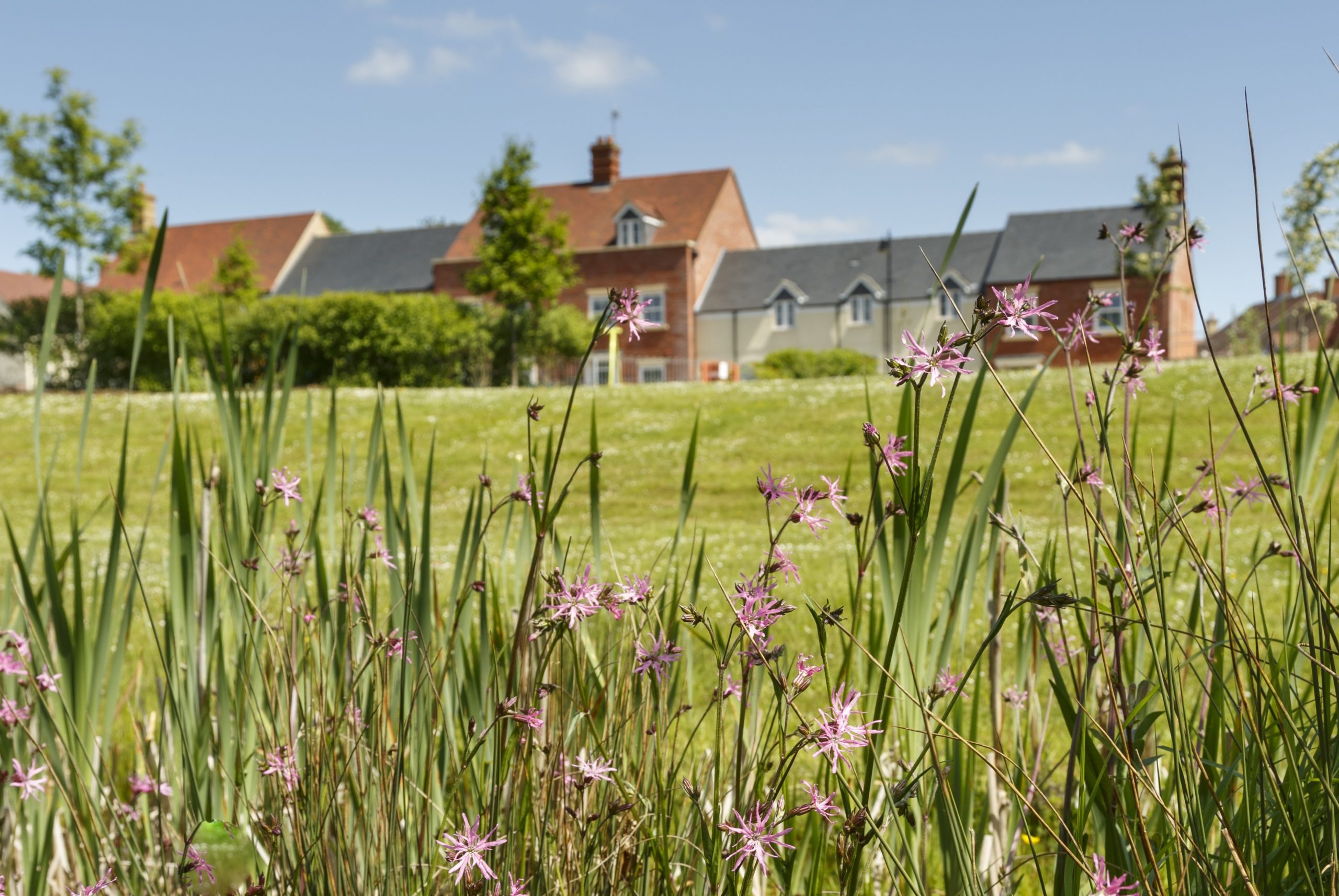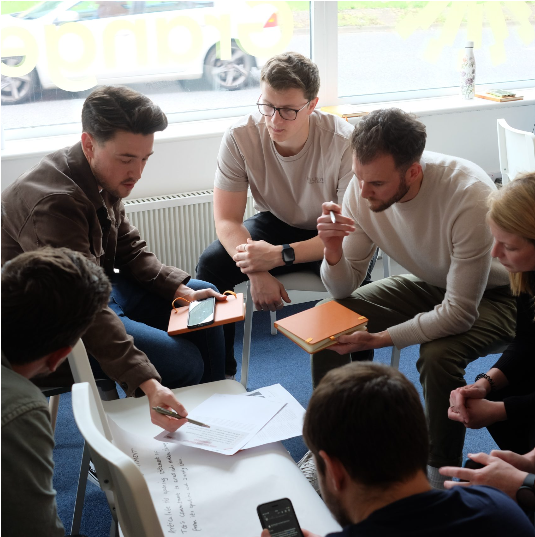How we make biodiversity net gain work in the real world
10 Jul 2025
10 Jul 2025
We’ve been helping clients navigate Biodiversity Net Gain (BNG) long before it became a mandatory part of development. And now that it’s a legal requirement for most projects in England, it’s more important than ever to get it right (and right early).
BNG is more than hitting the magic 10% metric. It creates lasting improvements for nature, in ways that actually work for our clients and their projects. Whether that’s on-site or off-site, our approach is rooted in realism, collaboration and long-term thinking to meet legislative requirements.
Discover the different ways a development can achieve the all-important +10% gain and deliver the best results for nature.
Learn how we get there and why it’s important.

The first port of call is always to find actions we can take as part of the development design itself: on-site BNG. Building green spaces into the plans or restoring natural habitats on developments are good ways to achieve on-site BNG. They provide wider benefits too, like making an area more attractive and enjoyable for the people that use it, looking out for its wildlife or providing flood alleviation to name a few.
If this isn’t possible, perhaps due to restrictions like limited space, then we need to look elsewhere with off-site BNG options. Making sure we align with the Biodiversity Gain and Mitigation hierarchies; we help clients explore alternative locations either on their own land or through trusted partners. The goal is to make sure that nature doesn’t lose out, even when space is tight.

Off-site gains should still be geographically relevant, so that the compensation is as close as possible to the impact. The further away the offset, the more compensation is required for the same impact.
As our BNG Lead, Emily Major says:
“We should always follow the Biodiversity Gain and mitigation hierarchies and strive for compensation onsite first of all. If we need to look at off-site solutions, they should contribute to larger, strategic landscape-scale biodiversity projects, such as those in local nature recovery strategies or designated areas. These efforts help build ecological connectivity across the country.”
And that’s a win for everyone.
The delivery can look quite different from one project to the next. The nature of the site matters. For example, it’s harder to achieve net gain on a woodland site than on an arable field due to the higher ecological value of woodland.
On-site BNG opportunities can be heavily impacted by development constraints of space and budget. We work hard to use our team’s skills and expertise in clever ways. The goal is to make the most of space and budget while still having the maximum positive impact, which is also realistically achievable.
Off-site BNG solutions are often varied. Private landowners or conservation bodies may offer habitat enhancement or creation opportunities that can add significant BNG value. We sometimes work with underfunded sites in poor condition where, with a bit of investment and care, huge biodiversity improvements can be made.
There’s no off-the-shelf answer to BNG. Each development is different, and each one puts our knowledge and experience to the test (and that’s why we love it!).
It’s our job to guide you through this BNG decision-making process with transparency. We keep your objectives and purpose in mind. We consider the budget available, as well as the ecological impact and the long-term viability at every step.
Recently, we’ve improved our process for sourcing off-site units. Rather than always going to the same habitat bank providers, we now gather at least three impartial quotes unless you have particular preference.
“This helps clients make informed decisions based on transparency, cost, location, and ecological value. It supports fairness and ensures that the chosen site aligns with nature’s needs and the development’s impact area.” – Emily Major

Three things: Early involvement, genuine collaboration and long term planning.
We don’t wait until late-stage design. Early involvement allows us to influence layouts and avoid costly penalties. Like having to relocate a development to protect a valuable habitat. This early integration saves time, avoids redesign headaches, and makes sure that BNG plans are deliverable.
We bring together our landscape, ecology, arboriculture and BNG teams from the start. Working alongside utilities and drainage experts, we can spot potential problems early. Things like identifying if underground services conflict with habitat proposals like ponds, or if woodland management will be financially and practically viable in the long run.
We also support our clients and ensure they understand BNG’s complexity through free continued professional development sessions and collaboration. We don’t design just to meet metric scores in spreadsheets; we assess feasibility and long-term management.
The UK is one of the most nature-depleted countries globally. Restoring biodiversity is essential for ecosystems and human wellbeing. A closer connection to nature is proven to positively effects people’s mental health and quality of life.
Biodiversity contributes to climate resilience. Trees and greenery reduce temperature in urban areas, improve air quality and reduce noise. These benefits support long-term sustainability goals for both people and planet.
While off-site BNG is beneficial, we’ll always advocate for maximising on-site nature on a development whenever possible. We believe Biodiversity Net Gains should be meaningful, maintainable, and serve the area they are in.
If you’re navigating BNG on your next project, we’d love to help. Get in touch and chat to us about what you’ve got planned. We’re looking forward to it.